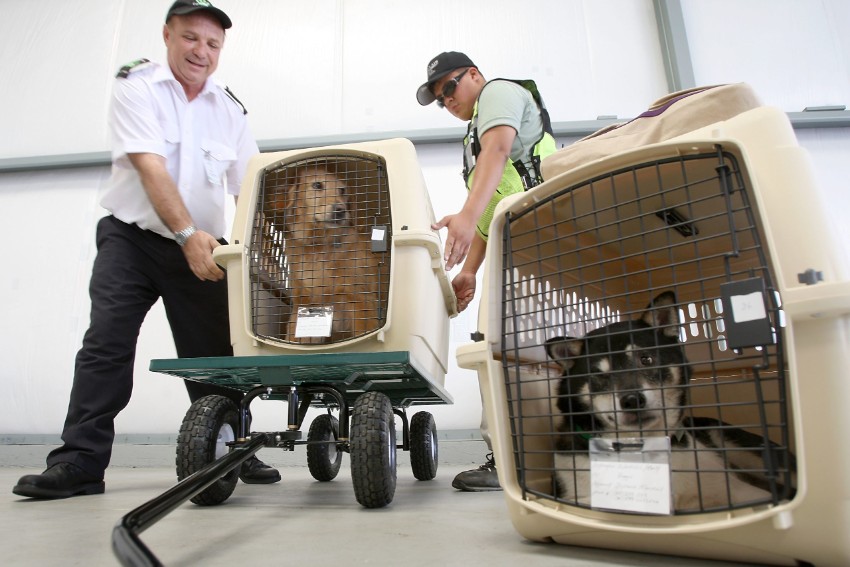Guide for Exporting/Importing Pets To Singapore
There are a few things to take note of when you want to import or export your pet from Singapore. First, you need to make sure that your pet meets the entry requirements of the country you are traveling to. Secondly, you need to get an import/export permit from the Agri-Food & Veterinary Authority of Singapore (AVA). Lastly, you will need to engage a professional pet mover who is experienced in handling such arrangements.
Things To Know Before Importing Pets to Singapore

When importing dogs or cats into Singapore, you should learn about Singapore pet import requirements and procedures in order to make the transition as smooth as possible for both you and your pet. If you are planning to bring your pet into Singapore, please note that the Agri-Food & Veterinary Authority of Singapore (AVA) requires all pets entering Singapore to have a valid rabies vaccination certificate.
First and foremost, all pets must have a health certificate that is issued by an accredited veterinarian no more than 14 days prior to arrival in Singapore. This document must state that the animal is free from any contagious diseases and has been vaccinated against rabies. You will need to submit these documents, along with the AVA import permit, to the checkpoint officer upon arrival.
In addition, all dogs and cats must be microchipped before they can enter Singapore. If your pet is not already microchipped, your vet can do this for you when they issue the health certificate.
Finally, all animals must undergo an inspection upon arrival at the airport in Singapore. During this inspection, a veterinarian will check the animal’s health certificate and microchip to ensure that all required vaccinations and tests have been carried out.
The National Parks Board (NParks) Animal and Veterinary Service (AVS) is in charge of all live animal imports. Before importing the pets from another country, importers must obtain an import license from NParks’ AVS and meet its pet quarantine standards.
If you are relocating to Singapore with your pet, be sure to keep these things in mind in order to make the process as smooth as possible. And if you have any other questions about pet relocation, don’t hesitate to contact a professional pet mover company for more information. They’ll be more than happy to help and be able to provide you with all the necessary information and assistance for relocating your pet to Singapore.
Things To Know Before Exporting Your Pets Out From Singapore
When you’re ready to relocate and move back home, there are a few things you need to do in order to export your pets from Singapore.
First, you’ll need to make sure that your pet has a health certificate that is issued by an accredited veterinarian no more than 14 days prior to departure. This document must state that the animal is free from any contagious diseases and has been vaccinated against rabies.
In addition, all dogs and cats must be microchipped before they can leave Singapore. If your pet is not already microchipped, your vet can do this for you when they issue the health certificate.
For those looking to export their pets from Singapore, please note that you will first need to obtain an AVA export permit. This can be done by submitting the required documents, which include a health certificate and rabies vaccination certificate, via the AVA website. Once you have obtained the permit, you may engage a professional pet mover to make all the necessary arrangements for your pet’s travel.
Finally, you’ll need to make sure that your pet meets all the requirements of the country you are moving to. Each country has different requirements, so be sure to do your research in advance.
If you’re planning on exporting your pet, be sure to keep these things in mind. And if you have any other questions about Singapore pet export, don’t hesitate to contact pet movers in your area for more information. They will be more than happy to help and be able to assist you with all the necessary steps for relocating your pet safely back home.
When it comes to relocating your pet, there are a few things you need to keep in mind. But with a little planning and preparation, the process can be a smooth and stress-free experience for both you and your furry friend. So if you’re planning on moving with your pet, be sure to keep these things in mind.
What You Need To Prepare Before, During & After Your Pet Relocation Day

Relocating can be a very stressful time not just for you but also for your pets. To make sure that the transition is as smooth as possible for everyone involved, it’s important to do some advance preparation.
While the day of pet relocation can be an exciting one, it’s important to remember that it’s also a big adjustment for your furry friend. So, in order to make the transition as smooth as possible, there are a few things you should do before, during, and after pet relocation day.
First, you’ll need to get your pet acclimated to their carrier or crate. This is important because they will likely be spending a lot of time in it during the move. Get them used to eating and sleeping in their carrier or crate so that they are comfortable and relaxed on moving days.
Next, you’ll want to make sure that your pet is microchipped and up-to-date on all vaccinations. This is important not just for their health but also because some countries have entry requirements that your pet must meet before they are allowed in.
Before the big day, be sure to pack all of your pet’s essentials – food, water, toys, bedding, and any other items they may need. In addition, you’ll want to have a pet first-aid kit on hand in case of any emergencies. This should include things like bandages, gauze, antiseptic wipes, and any medications that your pet takes on a regular basis.
On the day of the relocation, try to keep your pet calm and relaxed. If possible, take them for a walk or play with them before the move so they can burn off some energy.
During the actual move, be sure to keep them in a safe and comfortable place – like their carrier or crate – and make sure they have access to food, water, and any other items they may need.
After you’ve arrived at your new home, give your pet some time to adjust to their new surroundings. Allow them to explore their new home at their own pace and get comfortable in their new environment. And last but not least, be sure to give them plenty of love and attention. They’ve been through a lot and deserve it!
Once you’ve arrived at your new home, give your pet some time to adjust to their new surroundings. Explore the house or yard together, let them sniff around to get familiar with the smells of their new home, and get comfortable in their new environment. Be sure to have plenty of patience during this adjustment period. And last but not least, be sure to give them plenty of love and attention. They’ve been through a lot and deserve it!
Finally, don’t forget to update your pet’s microchip information with your new address and contact information. This is important in case they ever get lost in their new home.
By following these simple tips, you can help make the process of relocating with your pet as smooth and stress-free as possible. So if you’re planning a move, be sure to keep these things in mind.
Happy moving! :)”